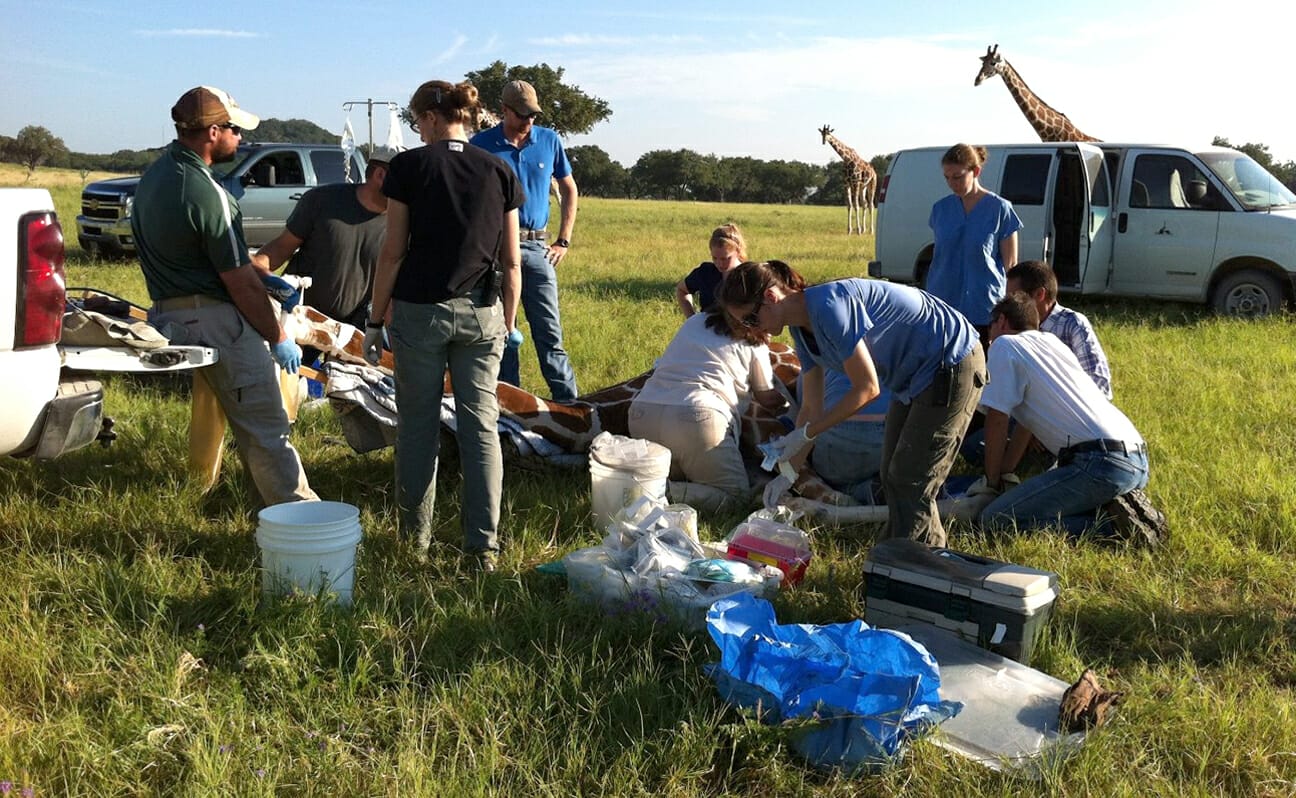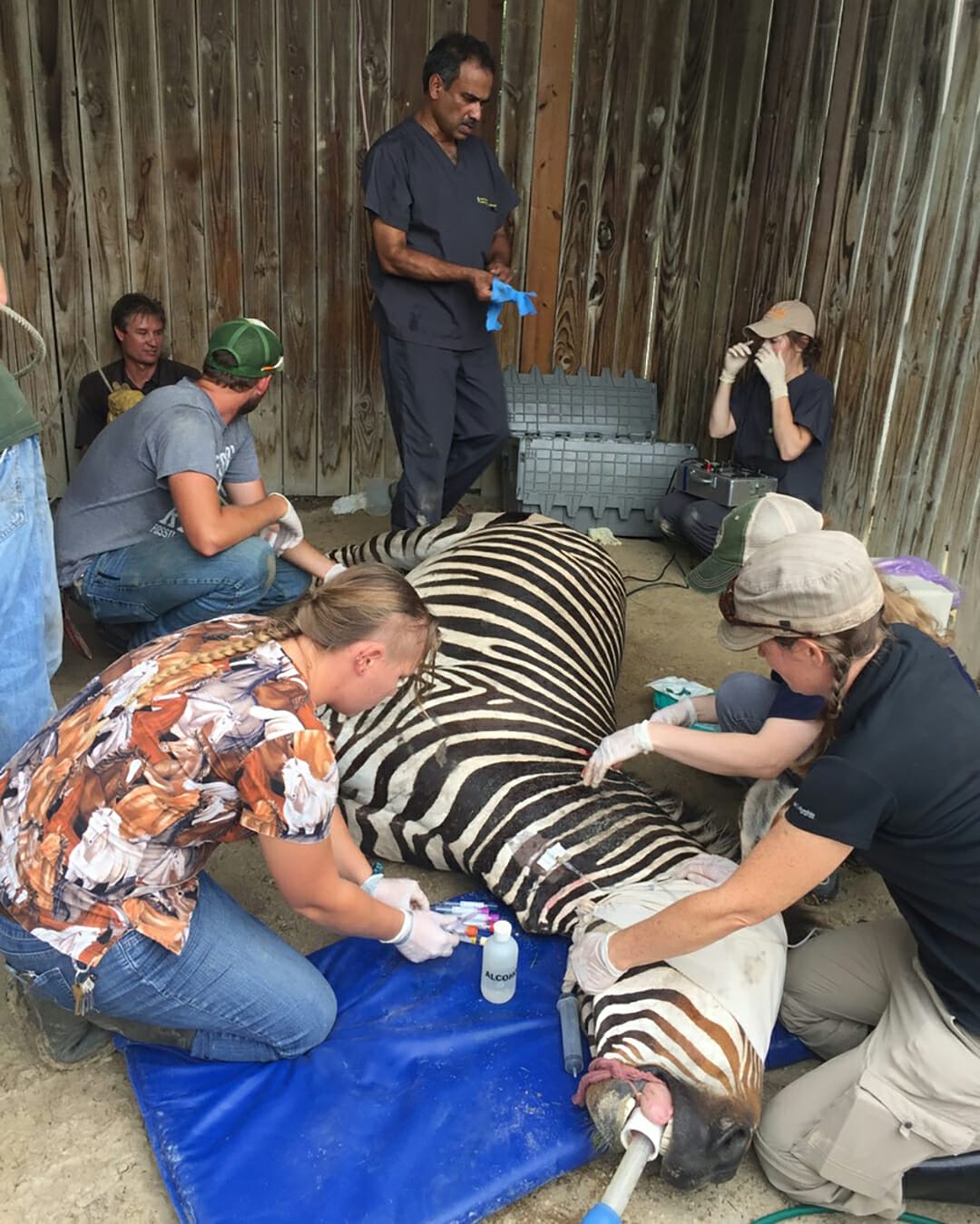Fossil Rim has an education department, but there are definitely staff members working in other facets of the wildlife center who do plenty of educating, as well.
Look no further than the veterinarians in the animal health department. Not only are they frequently teaching veterinary preceptees and veterinary technician interns, they are also helping people learn far beyond the boundaries of Fossil Rim.

“Because we have a specialized field here, (Dr.) Julie (Swenson) and I get approached on a fairly regular basis to talk to different groups,” said Dr. Holly Haefele. “Often, it will be vet students who have a zoo club and are interested in zoological medicine. They will get together and have invited speakers.”
It is not uncommon for a veterinary preceptee from Texas A&M University to say he or she first learned of the opportunity to come study at Fossil Rim from a presentation Swenson gave to the students.
“Julie has gone down to Texas A&M and, more recently, done some Zoom lectures for students,” Haefele said. “Sometimes, those talks are informal like ‘Here’s what I do and here’s what I did to get to this point. If you are interested in this field, these are some of the things to think about.’”

Even when the veterinarians plan in advance to discuss a certain topic, the amount of information to be presented may require blending introductory concepts with specific examples.
“In some cases, it’s a targeted topic for a particular lecture or class,” Haefele said. “For example, last fall I gave a lecture on zoonotic diseases to Texas State University undergrads for the Human Dimensions of Wildlife class. The veterinarian who had done that lecture in previous years was Dr. Robert Dittmar, who lost his life in a helicopter crash while surveying bighorn sheep for Texas Parks & Wildlife, so it was an honor to be asked to fill in for him.
“I started with a big-picture overview of zoonotic diseases; there is an increase in the emergence of zoonotic diseases and that’s probably due to anthropogenic changes from the increase of the human population and related demand for more food, resources, etc. We are impacting wildlife so greatly that we increase the chances for disease transmission.
“I also got very specific with examples like don’t hug or kiss your pet chicken at home, which can lead to transmission of salmonella. Humans are actually animals, after all, so it makes sense we are going to share diseases with other warm-blooded creatures.”
The time constraints of a classroom setting often dictate the approach to be taken for a presentation.
“During our Przewalski’s horse transfer (https://tinyurl.com/ya8h98x6), we had Dr. (Alice) Blue-McLendon from Texas A&M out here for a tour,” Haefele said. “She asked me to give a lecture to her vet student class on exotic large animal medicine. That’s a very broad topic, so we decided I’d focus on giraffe anesthesia. Giraffes are a challenging topic because of their unique considerations, so even getting into that requires some background on general ruminant anesthesia.

“Giraffes obviously have really long necks, which requires really high blood pressure so they don’t pass out. They have evolved to account for that.
“Some really cool adaptations allow them to function as such a unique animal, which makes for an interesting discussion along with how to dart them, how we do veterinary procedures in their pasture, and more. It was fun to talk to a group of second-year vet students who are excited to learn.”


Working at Fossil Rim in just about any department is a never-ending learning process, so it should be noted that the veterinarians also take the time to educate their fellow staff members – even the person who writes the blog posts so that you can stay informed on all of the interesting things happening here.
-Tye Chandler, Marketing Associate

